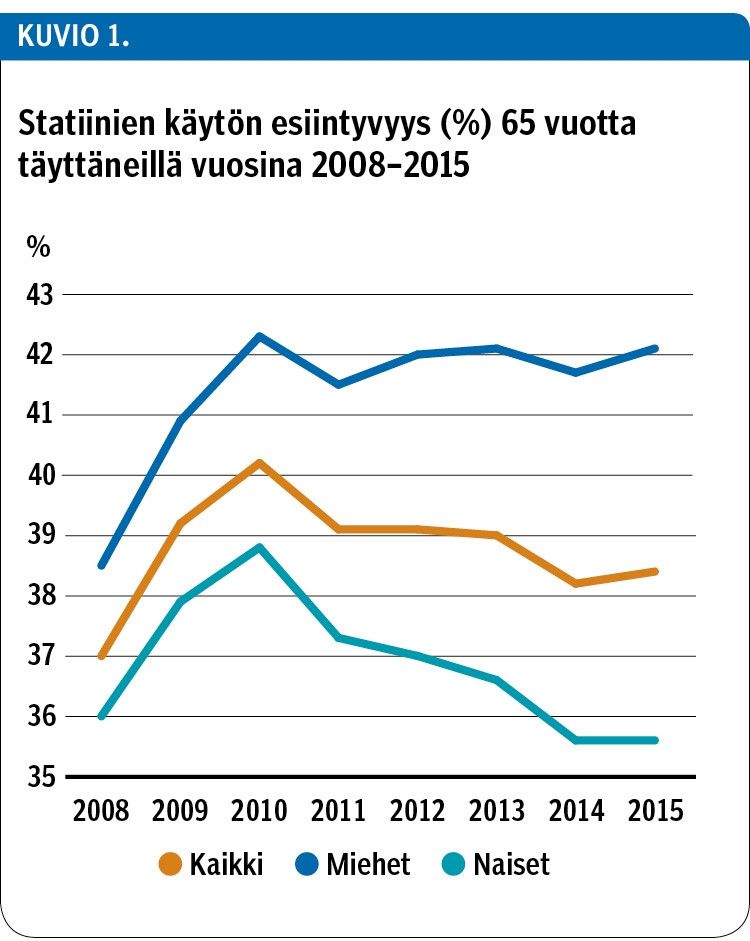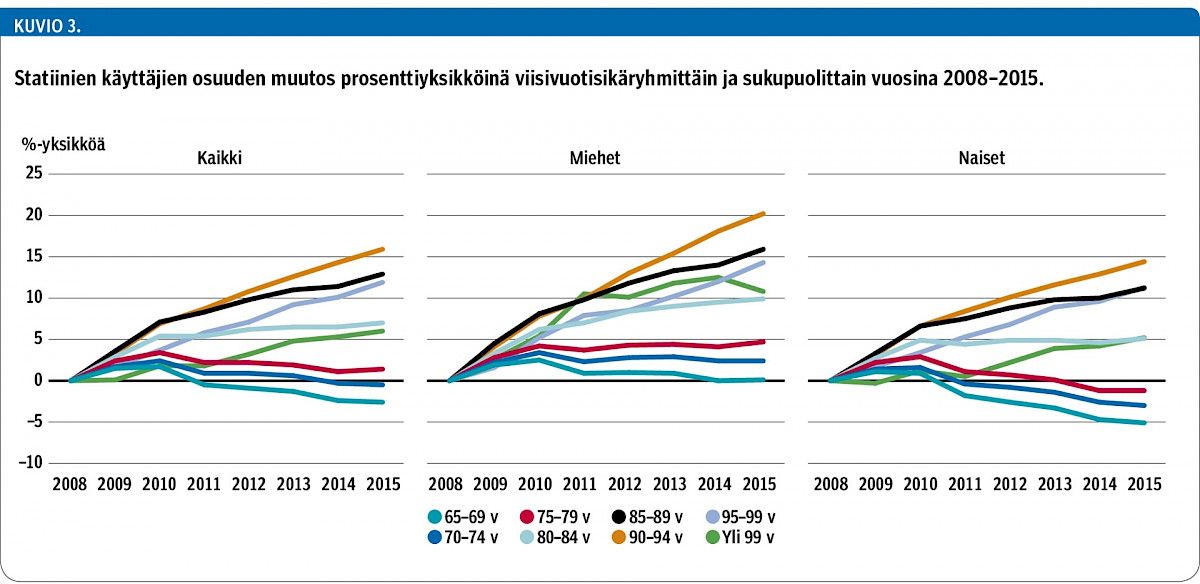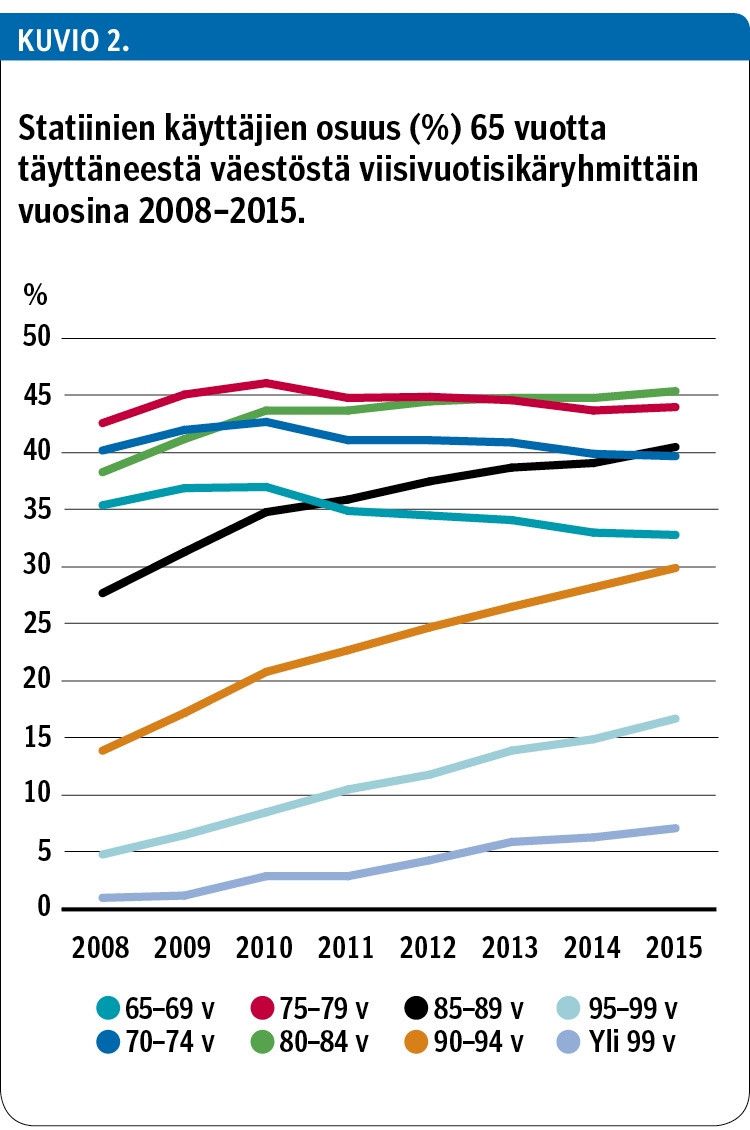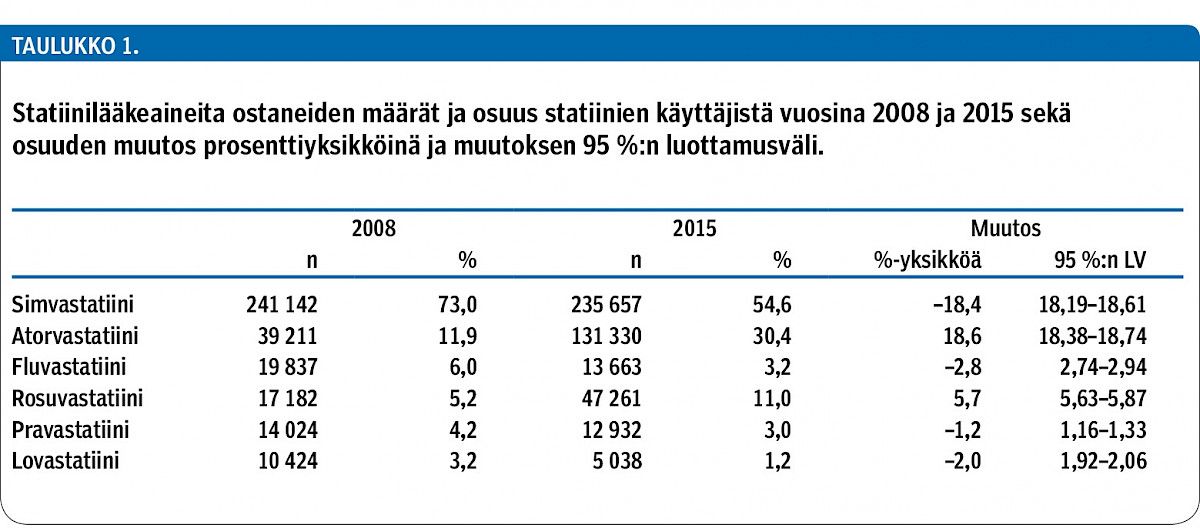Statin use has become more common among the eldest members of the population

Background
The prevalence of statin use has increased significantly in the entire population during the last 20 years. Statin use has particularly increased in those aged over 70 years. Statin use among older persons has also increased elsewhere in Europe and in the United States. The aim of this study was to determine the prevalence of statin use in the Finnish population aged 65 years or more as well as the change in prevalence according to sex and five-year age groups between 2008 and 2015.
Methods
The data for statin users aged 65 years and older was obtained from the statistical database Kelasto, which is based on the prescription register maintained by the Social Insurance Institution of Finland. The study population was divided into five-year age groups and according to sex. The prevalence of statin use was calculated as the actual number of persons purchasing statins divided by the total number of people covered by health insurance.
Results
The prevalence of statin use in the population aged 65 years and older increased only slightly from 2008 (37.0%, n=330,321) to 2015 (38.4%, n=431,569). The greatest change was in the 80 years and older categories, with an increase of 9.3 percentage points (pp) (95% CI 8.99–9.51). Men used statins more frequently than women did, and the difference in prevalence between sexes increased during the study period. In men, statin use increased in all age groups except the youngest, 65–69 years group. In women, statin use increased in the 80 years and older categories, but decreased in the under-80s. The biggest increase in prevalence was in men aged 80 years and over, since among those aged 90–94 years, statin use increased by 20.2 percentage points, among those aged 85–89 years 15.9, and in the 80–84 years group 9.9 percentage points. In women, statin use increased most in the 90–94 years age group (14.4 percentage points), while in the 85–89 years and 80–84 years groups the increase was 11.2 and 5.1 percentage points, respectively. Of all statins, simvastatin remained the most widely used, although its proportion of statin use decreased whereas the proportion of atorvastatin and rosuvastatin increased.
Conclusions
Older persons use statins more frequently than they used to, and this transition is partly due to a continuation in statin use as people get older. Men used statins more frequently than women did, whereas the prevalence of statin use decreased among women aged less than 80 years. The public debate questioning the benefits of statins may have contributed to the reduction in statin use. Further studies should be conducted to evaluate whether the results are partly due to more treatment decisions being made based on the overall artery disease risk than before.

















